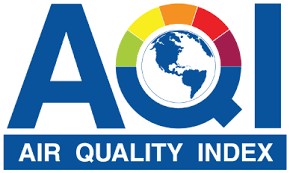Click on the links below for the other parts.
7. The EU AQI’s
As everything in Europe is complicated, so are the AQI’s. The oldest index is the CAQI which has different quality bands names, color scheme and break-points than the newest EAQI.
7.1. The CAQI
The CAQI index was introduced by the CiteAir (Common Information to European Air) project in 2006. It was revised in 2012 and is meant as an index for the air in the cities. It uses the concentrations (measured in ug/m3) of 3 core pollutants (O3, NO2, PM10) with PM2.5, SO2 and CO as optional. The different sub-indexes run from 0 to 100 as defined in the following table (link):
The table shows that the index break-points are not proportional to the concentrations for all pollutants as for instance for NO2 the “Very low” range [0..50] covers 0…50 ug/m3 whereas the “High” range [75…100] covers 200…400 ug/m3.
The names of the different categories relate to the magnitude of the index, and not the quality of the air. As customary, the highest sub-index defines the CAGI. Note that the sampling period usually is 1 hour. The CAQI can be viewed on-line at http://www.airqualitynow.eu/
Clicking a city gives more detailed information, as shown for Paris:
Clearly the CAQI is heavily “French” leaning, as the vast majorities of cities are in France.
This is probably the reason that the DG Environment commanded a research to Ricardo Energy & Environment which delivered in 2013 a paper defining an harmonized EAQI. The proposal was very similar to the EPA AQI, with an identical number of pollutants and an index running from 0 to 500; the names of the different categories were different. This project seems to have been a dead-end (due to it’s US similarities?) and never has been officially applied.
7.2 The EAQI
In November 2017 the EU introduced the EAQI = European Air Quality Index with a web-site showing the live-data. It is very difficult to find precise literature for this index which is somewhat similar to the CAQI, albeit with a different color scheme, a renaming of the categories and most important, different break-points. So most of the following information has been extracted from the excellent airindex.eea.europa.eu
First the naming of the 5 categories is now relevant to the air quality and not the magnitude of the index, the colors go from turquoise to brown and the indices from 0 to 100 relate to concentrations in ug/m3 as shown:
The numerical ranges of the indices are here (often the upper bound is given as equal to the lower bound of the following category which does not easy a decision for qualifying if by chance the data fall on a boundary):
I wrongly presumed that the break-points for each category are defined as they are for the CAQI.
The graph for the EAQI in Epinal (France) shows that the category is POOR as the PM10 concentration exceeds 71 ug/m3. As this is an 1h concentration, the EAQI break-point for PM10-POOR seems to be lower than in the CAQI table.
Finally after quite some detective-investigation, I found legends at the provisional web-site
www.eea.europa.eu/data-and-maps/dashboards/up-to-date-air-quality-data
which confirm those of the table at the start of chapter 7.2. See that here upper and lower bound values coincide!

Note how different these break-points are from those of the CAQI, which adds one more level to the overall confusion!
Conclusion:
Hopefully the EAQI will be the definitive step in harmonizing an AQI. But I have some doubt that these break-points will be stable for the coming years. As the trend goes to an ever tightening of the tolerated levels, the chances for future stability seem poor.
The web site airindex.eea.europa.eu betters that of the CAQI enormously as it includes measuring data all over Europe and shows the time series for the different pollutants.
The last part 5 to be followed asap concludes this series with a discussion of the new Luxembourg AQI introduced a couple of weeks ago with a smart phone app called “Meng Loft” , and which shows that adding confusion is not a privilege of big countries!







May 27, 2018 at 17:03 |
[…] Part 1, 3, 4. […]
May 27, 2018 at 17:27 |
[…] This is part 1. Click on the links below for the other parts. Part 2, 3, 4. […]
May 29, 2018 at 13:20 |
[…] A weblog on climate, global change and climate measurements « AQI: air quality confusion (4) […]
May 29, 2018 at 13:24 |
[…] on climate, global change and climate measurements « AQI: air quality confusion (2) AQI: air quality confusion (4) […]